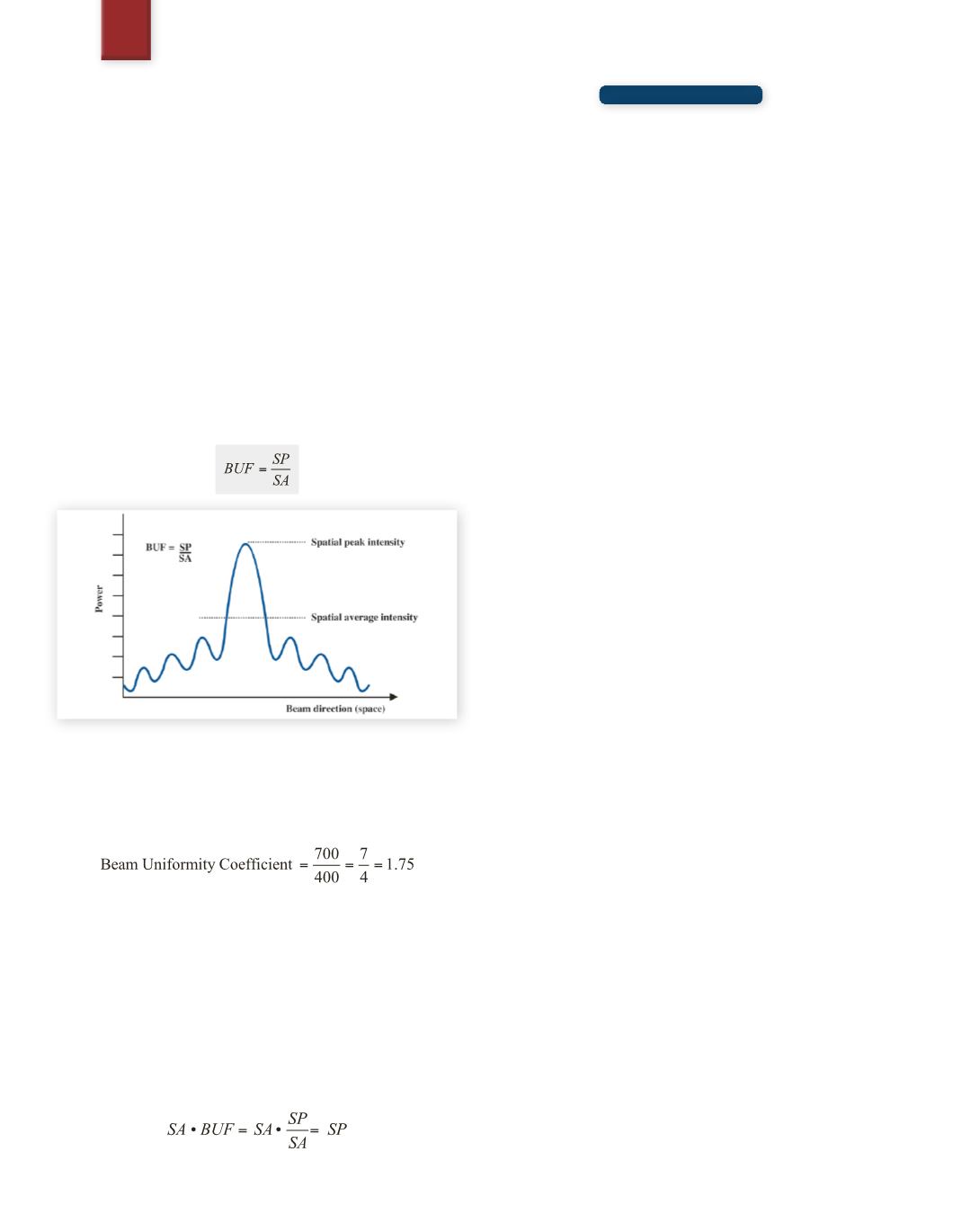
308
Level 2
Board Level
And similarly, to convert the (TA
⇒
PA), you divide the TA by the
duty factor as follows:
PA=TA/DF
Note: Recall that the duty factor represents the percentage of time the
transducer is producing energy that will interact with the patient. The
highest possible duty factor is 1, or 100%, which occurs in continuous
wave. All pulse wave modalities must have a duty factor less than 1.
A higher duty factor implies a greater potential for heat to build up
within the patient, increasing the likelihood of thermal bioeffects.
6.5 Conversion Between SP and SA Intensity: (BUF)
The Beam Uniformity Factor (BUF)
The beam uniformity factor or coefficient is defined as the spatial
peak divided by the spatial average. The BUF is a measure of how
uniform a beam is distributed spatially.
Fig. 6
Beam uniformity
◊
Example:
What is the BUF if the spatial peak intensity is 700 mW/cm
2
and the
spatial average intensity is 400 mW/cm
2
?
As noted above, the beam uniformity factor is defined as the spatial
peak divided by the spatial average. Since a peak is always greater
than or equal to an average, the BUF is always greater than or equal
to one, and in reality always greater than 1.A perfectly uniform beam
would have a BUF equal to 1.
Converting between the SA and the SP
To convert a spatial average to spatial peak, you multiply the spatial
average by the BUF as follows:
7. Exercises
Answers Pg. 565-566
1.
Define (from memory) each of the following:
a) I
SPTP
b) I
SPTA
c) I
SATP
d) I
SPPA
e) I
SAPA
f) I
SATA
g) I
m
2.
Of the above intensities, which must always be the greatest?
The smallest?
3.
“Pulse” refers to the energy only during the “pulse on” time
or pulse duration (PD). Temporal refers to the energy dis-
tribution over the entire ______________________ .
4.
The “BUF” beam uniformity coefficient is defined as:
BUF=?
5.
To convert an SP value to an SA value you need to know the
______________ .
6.
The peak is always ____________ than or equal to the
average.
7.
A spatial peak is always ____________ than or equal to a
spatial average.
8.
A temporal peak is always greater than or equal to a
____________ ____________.
9.
Spatial refers to the energy distribution over physical space
whereas ____________ refers to a beam’s energy distribu-
tion over time.
10. The pulse average must be ____________ than the pulse
peak.
11. The ____________ ____________ factor equals the
spatial peak divided by the spatial average, and is a measure
of how uniform a beam is spatially.
SAMPLE PAGE


